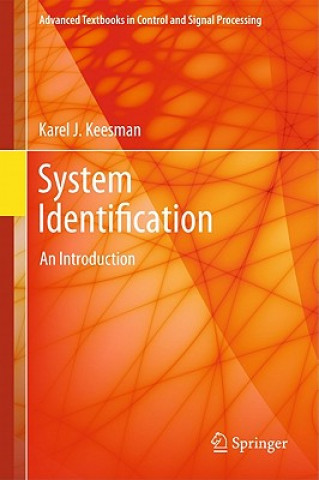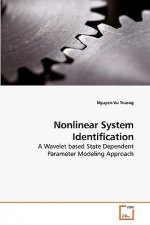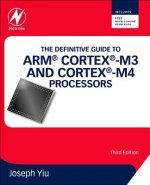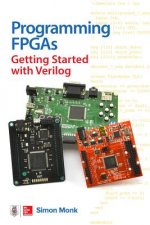
Code: 01210326
System Identification
by Karel J Keesman
System Identification: an Introduction shows the (student) reader how to approach the system identification problem in a systematic fashion. Essentially, system identification is an art of modelling, where appropriate choices have ... more
- Language:
 English
English - Binding: Paperback
- Number of pages: 323
Publisher: Springer London Ltd, 2011
- More about this

108.36 €

Low in stock at our supplier
Shipping in 12 - 17 days
Potřebujete více kusů?Máte-li zájem o více kusů, prověřte, prosím, nejprve dostupnost titulu na naši zákaznické podpoře.
Add to wishlist
You might also like
-

System Identification
132.94 € -

Aircraft System Identification
130.59 € -

Identification of Dynamic Systems
127.10 € -

Nonlinear System Identification
101.60 € -

Cybernetic Hypothesis
12.59 € -18 % -

System Identification and Adaptive Control
139.60 € -

Predictive Control for Linear and Hybrid Systems
88.39 € -

Bridges (New edition)
28.57 € -19 % -

Introduction to Passive Radar
178.52 € -

Detection and Estimation Research of High-speed Railway Catenary
139.60 € -

Arduino Project Handbook, Volume 2
24.27 € -9 % -

Who Was King Tut?
5.83 € -23 % -

Air and Missile Defense Systems Engineering
230.56 € -

Piano Sonata in A Major, Op. 101
147.28 € -

Frida Kahlo Masterpieces of Art
18.73 € -13 % -

Essentials of Finance and Accounting for Nonfinancial Managers
25.90 € -1 % -

Psychedelic Mysteries of the Feminine
17.30 € -18 % -

Feedback Control of Dynamic Systems, Global Edition
102.62 € -

Indestructibles: Baby, Let's Count!
6.03 € -19 % -

Little Hippo
9.93 € -4 % -

Soldiers and Silver
61.75 € -9 % -

Observer Design for Nonlinear Dynamical Systems
177.19 € -

Flowers of Buffoonery
14.23 € -12 % -

Web Scraping with Python: Data Extraction from the Modern Web
63.09 € -6 % -

Avatar: The Last Airbender -- The Bounty Hunter and the Tea Brewer
15.05 € -13 % -

The Goal
28.06 € -

Nonparametric System Identification
83.57 € -

Star Wars: The Force Awakens
9.93 € -24 % -

Ballistic Missile Defense Technologies
45.57 € -

Children of Hurin
81.42 € -23 % -

History of Western Philosophy
25.70 € -

Ship or Sheep? Student's Book
38.09 € -

Understanding Cryptography
43.21 € -8 % -

Introduction to Topological Manifolds
84.39 € -

Musical Brain - and Other Stories
32.05 € -10 % -

Strapdown Inertial Navigation Technology
221.34 € -

JavaScript and JQuery - Interactive Front-End Web Development
32.66 € -20 % -

International Code of Signals
17.20 € -19 % -

Sliding Mode Control In Engineering
434.39 € -

Sára Kniha druhá
7.47 € -19 % -

Eine »Wissenschaft vom Menschen«.
100.47 € -

Trilogía Reina roja (Pack con: Reina roja # Loba negra # Rey blanco)
34.30 € -5 %
Give this book as a present today
- Order book and choose Gift Order.
- We will send you book gift voucher at once. You can give it out to anyone.
- Book will be send to donee, nothing more to care about.
More about System Identification
You get 268 loyalty points
 Book synopsis
Book synopsis
System Identification: an Introduction shows the (student) reader how to approach the system identification problem in a systematic fashion. Essentially, system identification is an art of modelling, where appropriate choices have to be made concerning the level of approximation, given prior system s knowledge, noisy data and the final modelling objective. The system identification process is basically divided into three basic steps: experimental design and data collection; model structure selection and parameter estimation; and model validation, each of which is the subject of one or more parts of the text. §Following an introduction on system theory, particularly in relation to model representation and model properties, the book contains four parts covering:§· data-based identification non-parametric methods for use when prior system knowledge is very limited;§· time-invariant identification for systems with constant parameters;§· time-varying systems identification, primarily with recursive estimation techniques; and§· model validation methods.§A fifth part, composed of appendices, covers the various aspects of the underlying mathematics needed to begin using the text.§The book uses essentially semi-physical or grey-box modelling methods although data-based, transfer-function system descriptions are also introduced. The approach is problem-based rather than rigorously mathematical. The use of finite input output data is demonstrated for frequency- and time-domain identification in static, dynamic, linear, nonlinear, time-invariant and time-varying systems. Simple examples are used to show readers how to perform and emulate the identification steps involved in various model applications, as control, prediction and experimental design, with more complex illustrations derived from real physical, chemical and biological applications being used to demonstrate the practical applicability of the methods described. End-of-chapter exercises (for which a downloadable instructors Solutions Manual is available from www.springer.com/978-0-85729-521-7 will both help students to assimilate what they have learnt and make the book suitable for self-tuition by practitioners looking to brush up on modern techniques.§Graduate and final-year undergraduate students will find this text to be a practical and realistic course in system identification that can be used for assessing the processes of a variety of engineering disciplines. System Identification: an Introduction will help academic instructors teaching control-related courses to give their students a good understanding of identification methods that can be used in the real world without the encumbrance of undue mathematical detail.§
 Book details
Book details
Book category Books in English Technology, engineering, agriculture Electronics & communications engineering Electronics engineering
108.36 €
- Full title: System Identification
- Author: Karel J Keesman
- Language:
 English
English - Binding: Paperback
- Number of pages: 323
- EAN: 9780857295217
- ISBN: 0857295217
- ID: 01210326
- Publisher: Springer London Ltd
- Weight: 528 g
- Dimensions: 157 × 236 × 14 mm
- Date of publishing: 18. May 2011
Trending among others
-

Practical Electronics for Inventors
40.24 € -10 % -

Robot Builder's Bonanza
35.63 € -2 % -

Foundations of Analog and Digital Electronic Circuits
130.07 € -

The Art of Electronics
101.70 € -1 % -

The Art of Electronics: The x Chapters
64.93 € -4 % -

Scary Smart
24.37 € -

Definitive Guide to ARM (R) Cortex (R)-M3 and Cortex (R)-M4 Processors
72.30 € -

Programming FPGAs: Getting Started with Verilog
25.49 € -2 % -

MicroPython for Microcontrollers
33.38 € -9 % -

Sparky the AIBO
38.61 € -

Homemade Lightning: Creative Experiments in Electricity
30.21 € -

Lego Power Functions Idea Book, Volume 1
20.37 € -21 % -

The LEGO Power Functions Idea Book, Vol. 2
20.89 € -20 % -

How to Diagnose and Fix Everything Electronic, Second Edition
23.96 € -18 % -

Automotive Oscilloscopes
55.92 € -2 % -

Audiophile Vacuum Tube Amplifiers Volume 3
73.02 € -

Audiophile Vacuum Tube Amplifiers - Design, Construction, Testing, Repairing & Upgrading, Volume 2
73.12 € -

Electronics For Dummies, UK Edition
22.01 € -23 % -

Design of Analog CMOS Integrated Circuits
75.89 € -1 % -

Audiophile Vacuum Tube Amplifiers - Design, Construction, Testing, Repairing & Upgrading, Volume 1
73.02 € -

PLC Controls with Structured Text (ST)
32.05 € -2 % -

Arduino Cookbook
47.82 € -16 % -

How to Diagnose and Repair Automotive Electrical Systems
24.78 € -21 % -

LOGO! 8 - A Practical Introduction, with Circuit Solutions and Example Programs
30.62 € -4 % -

3,000 Solved Problems in Electrical Circuits
42.60 € -14 % -

Robotics, Vision and Control
71.69 € -8 % -

LEGO MINDSTORMS EV3 Idea Book
25.08 € -4 % -

Lego Technic Idea Book: Simple Machines
21.19 € -1 % -

Lego Technic Idea Book: Fantastic Contraptions
17.81 € -16 % -

Encyclopedia of Electronic Components
20.89 € -20 % -

Make: More Electronics
28.77 € -20 % -

Arduino Projects For Dummies
23.04 € -23 % -

High Speed Digital Design
99.45 € -

C Programming on Raspberry Pi
35.23 € -10 % -

Manga Guide To Microprocessors
22.63 € -14 % -

Encyclopedia of Electronic Components Volume 2
24.78 € -21 % -

Probabilistic Robotics
118.19 € -11 % -

Motors for Makers
31.54 € -15 % -

Automating with SIMATIC S7-1500
148.92 € -

Signals & Systems For Dummies
21.29 € -19 % -

Transformers for Tube Amplifiers
117.78 € -

Beginner's Guide to Reading Schematics, Fourth Edition
22.01 € -16 % -

Practical Electronics: A Complete Introduction
18.84 € -19 % -

Artificial Intelligence
11.15 € -23 % -

High-Frequency Magnetic Components 2e
200.85 € -

Practical Raspberry Pi
37.58 € -3 % -

Schaum's Outline of Electronic Devices and Circuits, Second Edition
25.70 € -15 % -

Introduction to Radio Frequency Engineering
77.53 € -

Practical Electronics - A Self-Teaching Guide
24.27 € -3 %
Collection points Bratislava a 2642 dalších
Copyright ©2008-24 najlacnejsie-knihy.sk All rights reservedPrivacyCookies


 15549 collection points
15549 collection points Delivery 2.99 €
Delivery 2.99 € 02/210 210 99 (8-15.30h)
02/210 210 99 (8-15.30h)